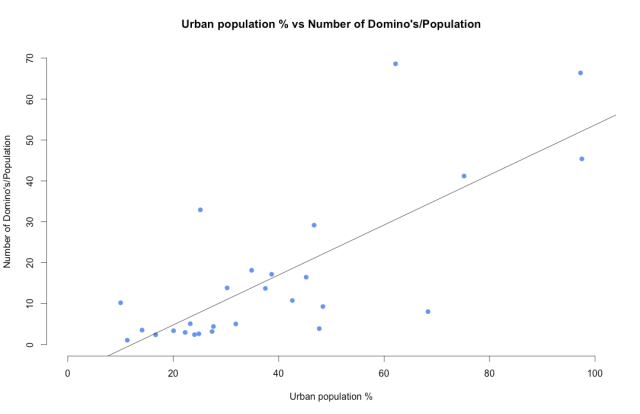 I left the last post talking about what could possibly determine the location of Domino’s restaurants. The correlation between the Urban population percentage of a city and the number of Domino’s stores in that city proved to be meaningful but not conclusive.
I left the last post talking about what could possibly determine the location of Domino’s restaurants. The correlation between the Urban population percentage of a city and the number of Domino’s stores in that city proved to be meaningful but not conclusive.
So picking up where I left off last week, I correlated the GDP of a city with the number of Domino’s restaurants in that city to try and find a more compelling reason for Domino’s to open an outlet in a new town.

This graph plots the number of Domino’s stores in a city against the “Relative” GDP of the city. The data is sourced from here. Relative GDP of a city here refers to the GDP of a city divided by 10^8 to make the numbers scaleable.
The R value for this plot is 0.83, which is a very strong correlation coefficient. This means that 83% of the location of Domino’s stores is explained by Relative GDP of the city. This is very significant because an R value of 0.83 offers me enough insight to try and make a calculated estimation of where a Domino’s store could possibly open.
So will a Domino’s open near your place? A good part depends on the GDP of the city you live in.

